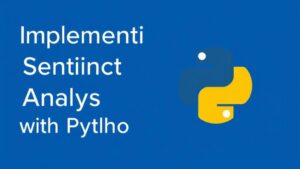Highlighting the Shift to Algorithmic Approaches
In today’s fast-paced financial landscape, automated decisions are no longer a luxury—they’re a necessity for savvy investors.
Forex Algorithmic Trading Strategies: Unlocking the Power of Automation
In the fast-paced world of foreign exchange (Forex) trading, the race towards success is heavily influenced by speed, accuracy, and the ability to analyze vast amounts of data. Enter algorithmic trading— a method that leverages computer programs to execute trades based on pre-defined criteria. This article delves into the intricacies of Forex algorithmic trading strategies, exploring their components, benefits, and practical applications.
What is Algorithmic Trading?
Algorithmic trading refers to the use of algorithms—sets of rules or instructions—to automate trading decisions. In Forex, these algorithms analyze market data and execute trades at speeds and frequencies that are impossible for human traders to replicate.
How Does It Work?
- **Data Collection**: Algorithms gather real-time data from various sources, including price charts, economic indicators, and news feeds.
- **Analysis**: Using statistical models and technical indicators, algorithms identify trading opportunities.
- **Execution**: When conditions are met, the algorithm executes trades automatically, often in fractions of a second.
- **Monitoring and Adjustment**: Algorithms continuously monitor market conditions and adjust strategies as necessary.
Key Components of Forex Algorithmic Trading
1. Strategy Development
Developing a robust trading strategy is the foundation of successful algorithmic trading. Here are key elements to consider:
- Market Analysis**: Determine whether the strategy will be based on technical analysis, fundamental analysis, or a combination of both.
- Risk Management**: Establish rules for position sizing, stop-loss, and take-profit levels to mitigate risks.
- Backtesting**: Use historical data to test the effectiveness of the strategy before deploying it in live trading.
2. Execution Platforms
Choosing the right trading platform is critical for executing algorithmic strategies. Popular platforms include:
- MetaTrader 4/5**: Widely used for its user-friendly interface and extensive library of trading indicators.
- NinjaTrader**: Offers advanced charting and analytics capabilities.
- cTrader**: Known for its speed and ease of use, making it suitable for algorithmic trading.
3. Programming Languages
Most algorithms are coded using programming languages that facilitate the automation of trading strategies. Common languages include:
- Python**: Known for its simplicity and extensive libraries for data analysis.
- MQL4/MQL5**: Specific to MetaTrader, these languages allow traders to create custom indicators and automated trading strategies.
- C++**: Offers high-speed performance, essential for high-frequency trading.
Types of Forex Algorithmic Trading Strategies
1. Trend Following Strategies
Trend following strategies aim to capitalize on established market trends. They involve:
- Identifying Trends**: Using indicators such as moving averages or the Relative Strength Index (RSI) to determine the direction of the market.
- Trade Execution**: Buying during upward trends and selling during downward trends.
**Example**: A simple moving average crossover strategy where a trader buys when the short-term moving average crosses above the long-term moving average and sells when the opposite occurs.
2. Arbitrage Strategies
Arbitrage involves taking advantage of price discrepancies in different markets. This strategy requires quick execution and includes:
- Triangular Arbitrage**: Exploiting differences in currency pairs across different exchanges.
- Statistical Arbitrage**: Using statistical models to identify mispriced currency pairs.
**Example**: If EUR/USD is priced at 1.2000 on one platform and 1.2010 on another, a trader could buy on the first and sell on the second, generating a profit from the difference.
3. Mean Reversion Strategies
Mean reversion strategies are based on the idea that prices will revert to their historical average over time.
- Identifying Extremes**: Algorithms look for overbought or oversold conditions using indicators like Bollinger Bands or the RSI.
- Trade Execution**: Buying when prices are below the average and selling when they exceed it.
**Example**: If a currency pair consistently trades around 1.3000 but spikes to 1.3100, an algorithm might execute a sell order, anticipating a return to the mean.
4. News-Based Strategies
News events can significantly affect currency prices. Algorithms can be programmed to react instantly to economic releases or geopolitical events.
- Economic Indicators**: Monitoring scheduled releases like employment reports, GDP growth, and interest rate decisions.
- Sentiment Analysis**: Analyzing news articles and social media sentiment to gauge market reactions.
**Example**: An algorithm could execute a buy order on a currency pair if a positive employment report is released, expecting an upward price movement.
5. High-Frequency Trading (HFT)
High-frequency trading is a subset of algorithmic trading characterized by rapid execution of a large number of orders.
- Market Making**: Providing liquidity by placing buy and sell orders simultaneously to profit from the bid-ask spread.
- Latency Arbitrage**: Exploiting differences in execution speeds across various platforms.
**Example**: A high-frequency trading firm may execute thousands of trades per second, aiming to capture small price movements that occur frequently.
Benefits and Challenges of Algorithmic Trading
Benefits
- Speed**: Algorithms can execute trades within milliseconds, allowing traders to capitalize on fleeting opportunities.
- Emotion-Free Trading**: By removing emotions from decision-making, algorithms adhere strictly to predefined strategies.
- Backtesting Capabilities**: Traders can test their strategies against historical data to gauge performance before committing real capital.
Challenges
- Technical Failures**: Software bugs or connectivity issues can lead to significant losses if not managed properly.
- Market Conditions**: Algorithms can perform poorly in volatile or unpredictable market conditions.
- Over-Optimization**: Relying too heavily on backtesting can lead to overfitting, where a strategy performs well on historical data but fails in real-time trading.
Conclusion
Forex algorithmic trading strategies offer a powerful means to navigate the complexities of the foreign exchange market. By leveraging technology, traders can enhance their decision-making process, execute trades with precision, and ultimately improve their profitability. However, while the benefits are significant, it is crucial for traders to remain aware of the inherent challenges and to continuously refine their strategies. As the landscape of Forex trading evolves, those who embrace algorithmic trading will likely find themselves at the forefront of this dynamic market.
In the world of Forex, the combination of human insight and algorithmic efficiency could be the key to unlocking unprecedented trading success.



